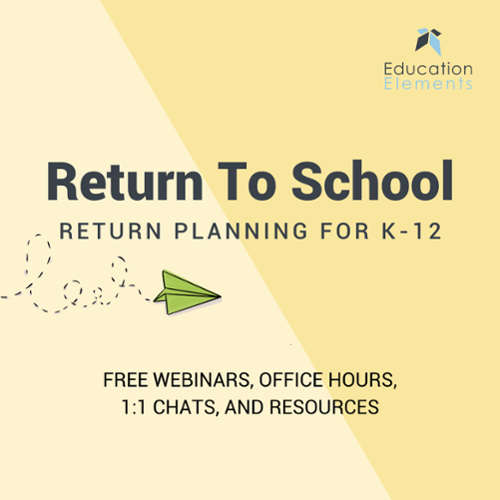
3 trends in the next phase of remote learning as covid-19 extends school closures
much of the initial planning around remote learning was based on the assumption that these were emergency measures; actions that would support students and teachers for a month or so. as of april 14th, twenty-one states have closed school for the remainder of the academic year. district and school leaders are shifting their focus towards longer-term solutions that make remote learning as meaningful as possible. often, discussions about remote learning can be captured in three trends:
- moving from district-delivered to school-centered
- addressing equity as an input to iterate on
- building community through (virtual) human interaction
moving from district-delivered to school-centered
in the initial rush to provide remote learning opportunities, most districts created the materials for students to use at home. now that remote learning is shifting from a temporary solution to an approach for the remaining months of the year, individual school teams will play a larger role in content creation and lesson facilitation. students are seeking engaging learning opportunities that are relevant to their needs and interests and delivered by the teachers they recognize. the popularity of teacher-created lessons on social media platforms reinforces what educators already know: that the most impactful learning happens between the student and the teacher. moving to school-centered remote learning is an important way of engaging students with the teachers they know and trust. there are important considerations as remote learning becomes more school-centered:
- school teams should centralize resources in a single location. this can be on a website, through a learning management system (lms), or even a hyperdoc.
- district-created materials are still useful when they are presented or reinforced by the teachers that students already know. for example, a teacher could record a lesson introducing district-created material and/or hold office hours to support students with those materials.
- let teachers lean on their instructional strengths. everyone doesn’t have to do the same work. have the teacher who is best at delivering a math lesson record the math videos and the teacher who is best at correcting a misunderstanding hold office hours.
addressing equity as an input to iterate on
when the covid-19 pandemic first began, school and district leaders had equity front-of-mind. leaders were concerned about students’ access to technology, high-speed internet, and at-home workspaces. this led to the recognition in many districts that consistent access to web-based remote learning varied across homes. as a result, districts often did two things: they created worksheet packets and distributed devices for students to take home. in retrospect, most people recognize the irony in defaulting to equality (giving everyone the same worksheet packets) as a result of having equity front-of-mind. it is also important to note that device distribution is not the last step towards equity. these are uncharted waters and no district is going to figure out an “equity solution” on their first try. instead, leaders should view equity strategies as inputs to iterate on.
- input more energy into developing and implementing strategies that work towards equity by supporting targeted students to access high-quality learning opportunities.
- iterate on those strategies by constantly reflecting on data to determine if they’re having their desired impact and adjusting them to be more effective.
addressing virtual learning equity issues as schools close due to covid-19
building community through (virtual) human interaction
schools are not just a place for academics, they are communities. more often than not, the most prominent memories of school are about the relationships built with friends and teachers. this crisis is reminding everyone of how important these relationships are. school teams that prioritize building community in virtual spaces will be better positioned to support their students and teachers. individuals and teams are finding innovative ways to virtually interact with one another, many of which can translate into classroom settings. 瑞士vs喀麦隆亚盘赔率 has developed a series of resources that leaders might find useful:
- blog: cultivating resilience through daily wellness practices
- guide: educators’ self-care - 25 ways to pause & prioritize
- one-pager: building and sustaining a remote work culture
are there any emerging trends or patterns you’re noticing in your school or district? share with us on twitter @edelements or @noahdougherty, as we all learn from each other in navigating these times and the challenges they bring.
looking for more resources as your team works to serve the needs of students, teachers, and community members? be sure to check out our ever-growing series, educating through covid-19, for blogs, downloadable guides, and live and on-demand webinars from education experts and leaders.
about noah dougherty - guest author
noah dougherty is the ceo and co-founder of relevant learner. he taught secondary ela and social studies for eight years before becoming an instructional coach and school leader. noah has written curriculum for public districts, charter organizations, and for-profit companies. he also worked as a consultant, partnering with districts across the country on personalized learning; strategic planning; and diversity, equity, and inclusion initiatives. noah grew up in syracuse, ny and now lives in washington, dc.



